Using Collaborative Educational Technology Tools in Science
By Cindy Workosky
Posted on 2019-02-25
Science literacy is critical for our students. We need them to understand why it is important for them to do activities, such as composting. In fifth grade, one of the goals for students is to obtain information about, evaluate, and communicate how individual communities use scientific ideas to protect Earth’s resources. Using a combination of hands-on and digital learning experiences can help students achieve this goal. Helping students make the connection between the design of the compost bin and the need to protect the Earth’s resources was going to be my challenge. I knew that using tools such as hyperdocs, Google Draw, and Flipgrid, I could delve deeper into the concept of composting and really learn what my students know and understand about composting.
How was I going to ask a group of Massachusetts fifth graders to compare two designs for compost bins when we understood very little about what composting is? One of the struggles elementary educators experience in science instruction is not having a strong grasp of the material we are being asked to teach, so we are unable to demystify student misconceptions. I researched composting to create a learning experience for students that would help us all better understand the science involved in composting. We needed to understand not only why composting happened, but also how it happens. As part of this learning experience, my instruction would need to include opportunities for the students to learn about the movement of matter among plants, animals, decomposers, and the environment.
Designing this personalized learning experience led me on a journey into my pedagogical toolbox. I began compiling rich resources and collecting big questions for students to ponder. I created a hyperdoc on composting that allowed students to discover, learn, explore, design, share, and reflect. Using the hyperdoc model in the science classroom enabled students to think deeply and access multiple ways of discovery, participating in both technology-laden and non-tech activities to create strong connections to disciplinary core ideas in science. It also helped me organize my own scientific process for mastering the art of explaining composting to students.
We started the unit by exploring students’ prior knowledge of composting, asking what they knew to build on their schema. Most students had seen composting in Whole Foods stores and related it to a form of recycling. We visited our community garden compost bin, discussing practical uses for it to help our school. We observed the bin’s design and its contents. This led to the big question, “Does this compost bin suit our school’s needs, or is there a better way to build a compost bin for our school?” Students knew their task was to compare different ways of composting, then engineer “a new and improved model.” They watched a video created by a kindergarten class, as phenomena to see how someone else solved this problem. This got us started. Students were asked to explain in the hyperdoc what they learned, and now understood, about composting, as well as what questions they had.
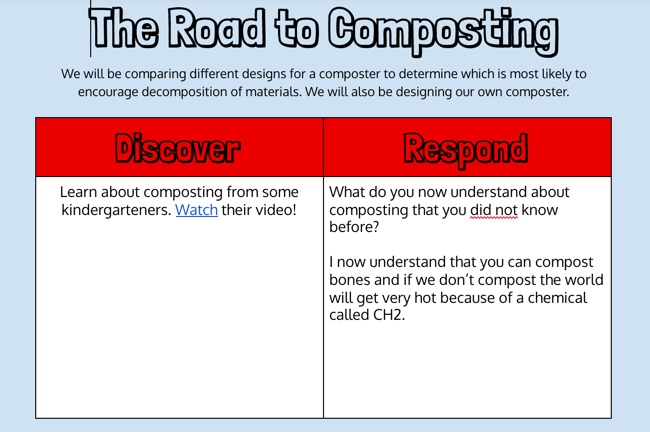
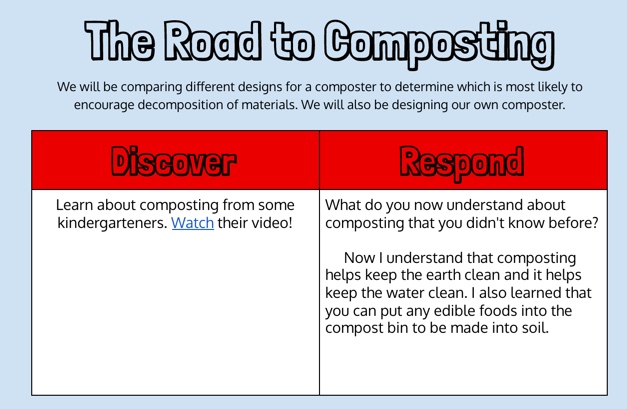
We explored composting and learned about biodegradable materials. We discovered that we eat a lot of dirt for lunch. Students made connections between what they ate and what can be composted by interviewing classmates and collecting data for a table. They were introduced to the notion of temperature change in a compost pile and played a compost card game with classmates.
During our study of ecosystems, students learned that matter moves among plants, animals, decomposers, and the environment. They needed to know that composting meant the food waste from the cafeteria was decomposing, and that they were recycling matter right in our own garden. These activities helped students develop a strong foundation in their understanding of composting, which prepared them for the task of comparing composters and creating their own compost bin. Directions were provided in the hyperdoc, and students worked at their own pace. The hyperdoc provided a way for students to learn independently and collaboratively! It also allowed me to provide learning experiences using digital and paper activities that allowed students to explore the science content more deeply.
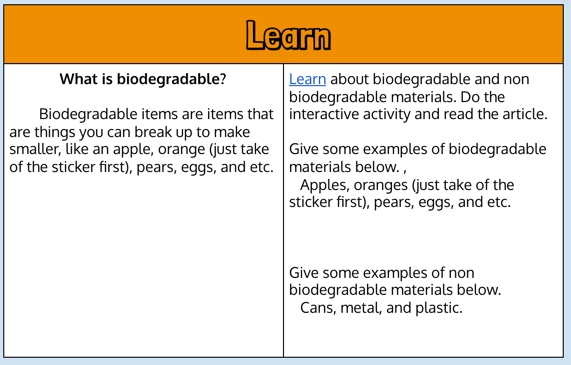
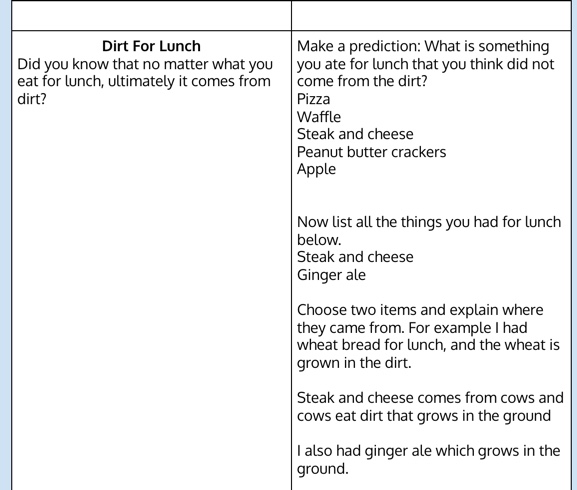
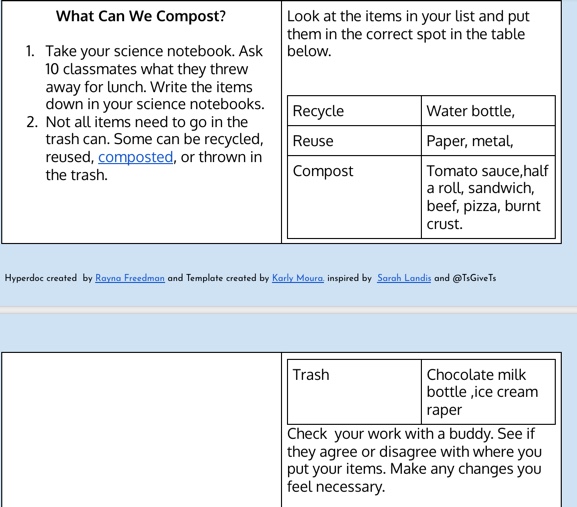
Students were asked to observe our school’s compost bin, located near our community garden. They watched a video explaining how to assemble a compost bin, and compared the knowledge they gleaned from the video with their observations of our school’s compost bin. Students then visited the Home Depot website, a task that could not be completed without technology, and chose two compost bins they were interested in purchasing for a comparison study.
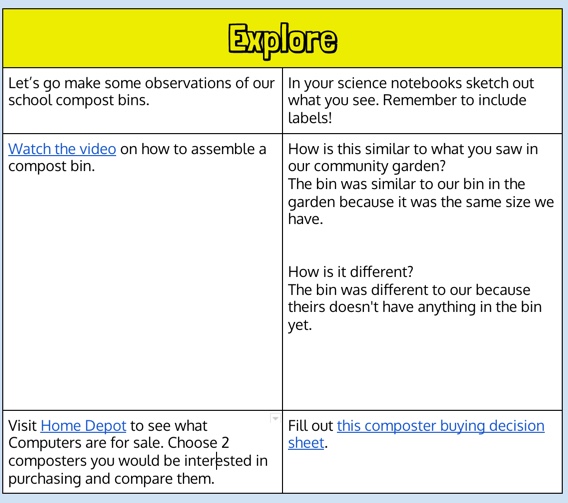
Next, students used the engineering design process to create a model of a compost bin. Engaging in this design activity provided the students the opportunity they needed to develop a model that would illustrate the movement of matter that happens throughout the composting process. They had to design improvements to the compost bin they had chosen to purchase in the previous activity. First, they had to identify changes to the compost bin and provide evidence for their rationale.
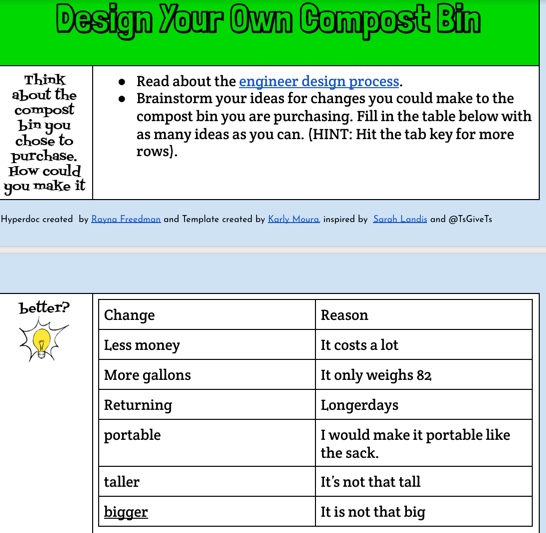 Students then had to create a new Google Drawing for their compost model and name the compost bin. Students included labels for each part of their design. They shared their iteration with a classmate, seeking advice for what worked well and how they could improve it. They used peer feedback to make changes to the compost bin design.
Students then had to create a new Google Drawing for their compost model and name the compost bin. Students included labels for each part of their design. They shared their iteration with a classmate, seeking advice for what worked well and how they could improve it. They used peer feedback to make changes to the compost bin design.
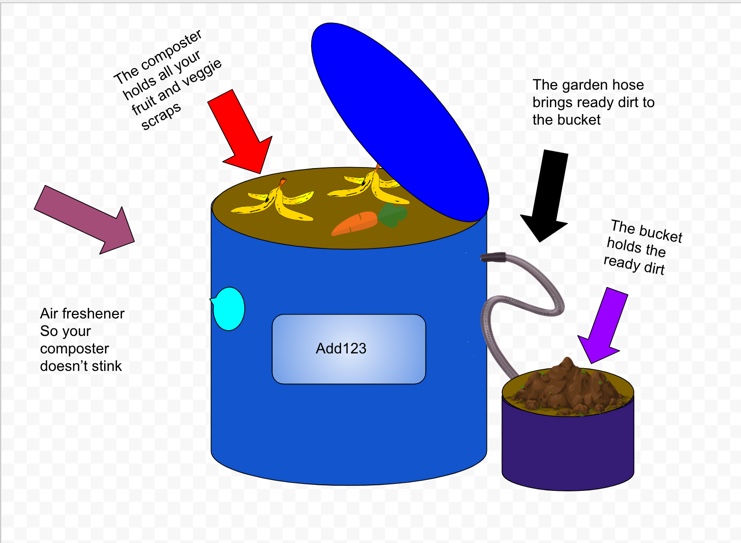
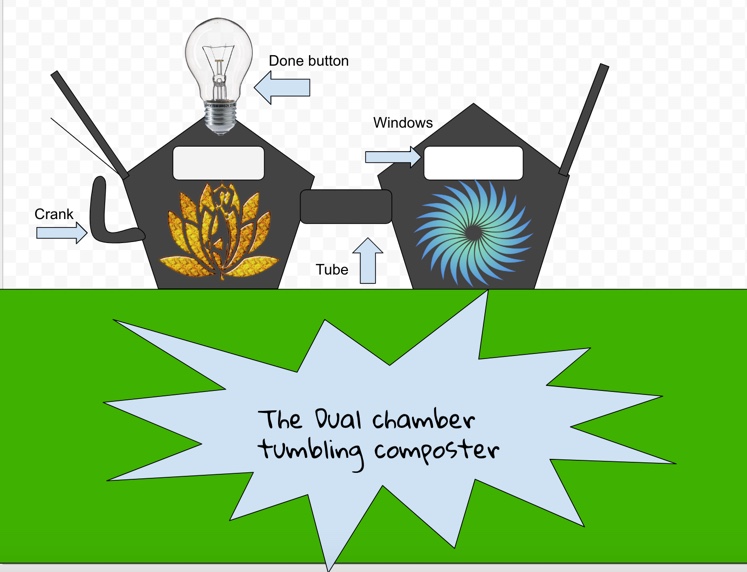
Once drawings were completed, students shared ideas with classmates. Using Flipgrid, they created a short commercial to persuade others to purchase their compost bin. Flipgrid provided a platform for the students to engage in argument from evidence. As they were trying to persuade, they were sharing the reasoning behind their choice. Students replied to one another using academic vocabulary they learned when they were investigating movement of matter. They explained the reasoning behind whether or not they would purchase their classmate’s compost bin.
To conclude their investigation, students reflected on their experience using a Padlet. Each student was asked to create an original post, then respond to at least one other classmate. Using Padlet provided all students with another opportunity to engage in discourse about the work, ensuring that every voice spoke, including the introvert who normally would not participate in the science conversation.
In a few short weeks, students explored their ideas about composting, made observations, created and compared their compost bins, and shared their knowledge with a community of learners. The class Flipgrid and Padlet were shared with parents and on Twitter, engaging a global community in our science learning.
Using the hyperdoc was a great way to provide feedback to students as they were working, since I could observe students throughout the learning experience. I could also sit with them and explore with them, and those conversations about science were invaluable.
Using educational technology tools in the science classroom enhanced and empowered students, inspiring them to seek solutions to a problem they were previously unaware of. It is important to consider both the tool and the pedagogical reasoning for using it, as it is the students’ and teacher’s needs that must be considered first when planning activities that integrate technology. However, the learning experiences that occurred during our composting unit would not have been possible without the power of collaborative educational technology tools.
Standards Covered
MA Science Standard: 5-LS2-2(MA). Compare at least two designs for a composter to determine which is most likely to encourage decomposition of materials.*
NGSS
5-LS2-1. Develop a model to describe the movement of matter among plants, animals, decomposers, and the environment. [Clarification Statement: Emphasis is on the idea that matter that is not food (air, water, decomposed materials in soil) is changed by plants into matter that is food. Examples of systems could include organisms, ecosystems, and the Earth.] [Assessment Boundary: Assessment does not include molecular explanations.]
5-ESS3-1. Obtain and combine information about ways individual communities use science ideas to protect the Earth’s resources and environment.
3-5-ETS1-1. Define a simple design problem reflecting a need or a want that includes specified criteria for success and constraints on materials, time, or cost. 3-5-ETS1-2. Generate and compare multiple possible solutions to a problem based on how well each is likely to meet the criteria and constraints of the problem.
Common Core
RI.5.7 Draw on information from multiple print or digital sources, demonstrating the ability to locate an answer to a question quickly or to solve a problem efficiently.
RI.5.9 Integrate information from several texts on the same topic in order to write or speak about the subject knowledgeably.
W.5.1 Write opinion pieces on topics or texts, supporting a point of view with reasons and information.
W.5.8 Recall relevant information from experiences or gather relevant information from print and digital sources; summarize or paraphrase information in notes and finished work, and provide a list of sources.
W.5.9 Draw evidence from literary or informational texts to support analysis, reflection, and research.
CCSS.ELA-LITERACY.SL.5.1.A
Come to discussions prepared, having read or studied required material; explicitly draw on that preparation and other information known about the topic to explore ideas under discussion.
CCSS.ELA-LITERACY.SL.5.1.C
Pose and respond to specific questions by making comments that contribute to the discussion and elaborate on the remarks of others.
CCSS.ELA-LITERACY.SL.5.4
Report on a topic or text or present an opinion, sequencing ideas logically and using appropriate facts and relevant, descriptive details to support main ideas or themes; speak clearly at an understandable pace.
SL.5.5 Include multimedia components (e.g., graphics, sound) and visual displays in presentations when appropriate to enhance the development of main ideas or themes.
CCSS.ELA-LITERACY.SL.5.6
Adapt speech to a variety of contexts and tasks, using formal English when appropriate to task and situation. (See grade 5 Language standards 1 and 3 here for specific expectations.)
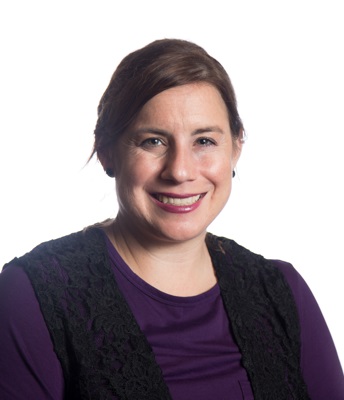 Rayna Freedman is a fifth-grade teacher at Jordan/Jackson Elementary School in Mansfield, Massachusetts. She has taught grades 3–5 and is an Instructional Technology Specialist. She is working on earning a doctorate from Northeastern University, as she hopes to change the field of education someday. Freedman is president of Massachusetts Computer Using Educators and has presented sessions at MassCUE’s annual conference since 2010. She is a Google Level 2–certified educator, a BrainPOP–certified educator, a Flipgrid Ambassador, and a Fablevision Ambassador and serves on the Massachusetts Department of Elementary and Secondary Education Digital Literacy and Computer Science Standards Panel. Freedman has presented sessions at International Society for Educational Technology, Ed Tech Teacher Summits, Tech & Learning Leadership Summits, Medfield’s Digital Learning Day, Future Education Technology Conference, Blended & Personalized Learning Conferences, and Alan November’s Building Learning Communities Conference.
Rayna Freedman is a fifth-grade teacher at Jordan/Jackson Elementary School in Mansfield, Massachusetts. She has taught grades 3–5 and is an Instructional Technology Specialist. She is working on earning a doctorate from Northeastern University, as she hopes to change the field of education someday. Freedman is president of Massachusetts Computer Using Educators and has presented sessions at MassCUE’s annual conference since 2010. She is a Google Level 2–certified educator, a BrainPOP–certified educator, a Flipgrid Ambassador, and a Fablevision Ambassador and serves on the Massachusetts Department of Elementary and Secondary Education Digital Literacy and Computer Science Standards Panel. Freedman has presented sessions at International Society for Educational Technology, Ed Tech Teacher Summits, Tech & Learning Leadership Summits, Medfield’s Digital Learning Day, Future Education Technology Conference, Blended & Personalized Learning Conferences, and Alan November’s Building Learning Communities Conference.
Note: This article was featured in the February issue of Next Gen Navigator, a monthly e-newsletter from NSTA delivering information, insights, resources, and professional learning opportunities for science educators by science educators on the Next Generation Science Standards and three-dimensional instruction. Click here to sign up to receive the Navigator every month.
Visit NSTA’s NGSS@NSTA Hub for hundreds of vetted classroom resources, professional learning opportunities, publications, ebooks and more; connect with your teacher colleagues on the NGSS listservs (members can sign up here); and join us for discussions around NGSS at an upcoming conference.
The mission of NSTA is to promote excellence and innovation in science teaching and learning for all.
Future NSTA Conferences
2019 National Conference
Follow NSTA
Disclaimer: The views expressed in this blog post are those of the author(s) and do not necessarily reflect the official position of the National Science Teaching Association (NSTA).


